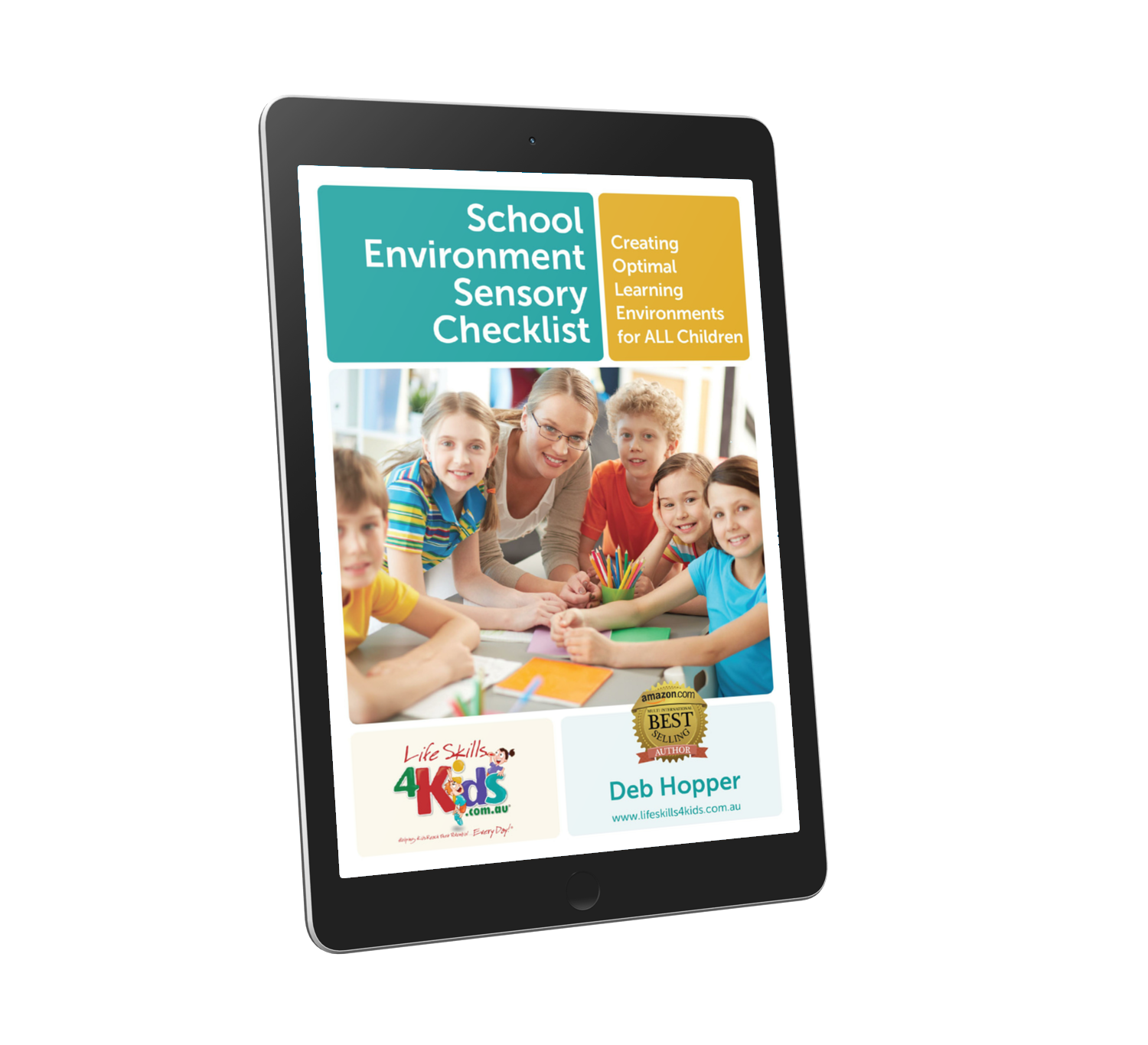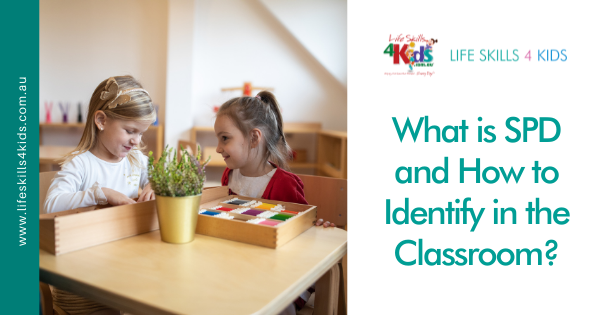Let’s take a closer look at what SPD is and find out ways to identify it in the classroom environment.
As professional educators, it is important to know about any sensory issues that may challenge our pupils. SPD (Sensory Processing Disorder) is one of the issues that could prevent kids from learning and being successful during their school years.
For more information about SPD, check out my post What is SPD?
Why challenges in sensory integration affect learning
Our Five Senses play an important role in being able to understand our surroundings and our environment. As I’ve already mentioned in the post I linked to above, difficulties can occur with any of the senses:
- Touch
- Taste
- Vision
- Hearing
- Olfactory (smell)
Other senses that may not be thought of commonly also include:
- Muscle/Body Awareness (proprioception)
- Spatial Orientation (Vestibular)
In each of these systems, a child or adult may have different responses to different stimuli or in different environments. These can be summarised as:
- Over sensitive/sensory defensive (Hypersensitive)
- Sensory Seeking (Hyposensitive)
SPD difficulties can stand on their own or as part of a diagnosis.
In the case of Sensory Processing Disorder, it is hypothesised that the brain does not compile the sensory impulses in a way that gives the child specific information for the appropriate response. As a result, learning can be difficult and children may feel uncomfortable, or have difficulty coping with the stress of daily organisational demands.
What is SPD and how to identify in the classroom?
SPD in kids can manifest itself in many forms, just in the way that people are unique, so each child’s specific sensory issues will be individual. Pupils with Sensory Processing Disorder may express sensations either, or in a combination of, hypersensitivity (sensory avoidance) or hyposensitivity (sensory seeker).
There are a few tests professionals can use to identify sensory processing issues. These include Sensory Integration and Praxis Tests (SIPT) and the Sensory Processing Measure (SPM) checklist.
While all children can be particular about their individual likes and dislikes, children with SPD will be so severely affected by their sensory preferences that it interferes with their normal, everyday functioning.
Common signs of SPD:
Hypersensitivities to sensory input may include:
- Extreme response to or fear of sudden, high-pitched, loud, or metallic noises which seem inoffensive to others
- Background noises that others don’t seem to hear may be extremely distracting to them
- Fearful of surprise touch, avoids hugs and cuddling even with familiar adults
- Can be fearful
- Doesn’t enjoy a game of tag and/or is overly fearful of swings and playground equipment
- Extremely fearful of climbing or falling, even when there is no real danger i.e. doesn’t like his or her feet to be off the ground
- Hates messy play / painting / getting hands dirty
- Dislikes new tactile sensations
- Has poor balance, may fall often
Hyposensitivities to sensory input may include:
- A constant need to touch people or textures, even when it’s inappropriate to do so
- Doesn’t understand personal space even when same-age peers are old enough to understand it
- Clumsy and uncoordinated movements
- An extremely high tolerance for or indifference to pain
- Often harms other children and/or pets when playing, i.e. doesn’t understand his or her own strength
- May be very fidgety and unable to sit still, enjoys movement-based play like spinning, jumping, etc.
- Seems to be a “thrill seeker” and can be dangerous at times
If you work in a school where you are lucky enough to have access to an Occupational Therapist (OT), they will be able to help you assess whether a child in your class is having sensory processing issues or SPD. An OT evaluation will include assessment of a child’s gross motor and fine motor skills, as well as sensory processing issues.
In my article on Identifying Kids with Sensory Issues in class, I have outlined the Top 5 signs that might indicate a child is struggling with sensory issues. Here’s what to look out for:
- The fidgeter: these kids can’t keep their fingers still or their hands to themselves.
- The wiggler and rocker: these kids are always on the move.
- Visual signs: the child with visual sensory difficulties may find it hard to copy from the board, or may struggle with sitting side on to the board and having to turn around to look and copy.
- Auditory anxiousness: noise in classrooms can be distracting, or even anxiety-producing for some children.
- Postural strength: often the kids we see with sensory issues also have low muscle tone and poor core stability, so sitting on the floor or at a desk for a prolonged period is very tiring.
Further Information on SPD
I am passionate about working with kids with SPD and using my experience and expertise I have written several articles to help you further with SPD. SPD can be a part of a child with ADHD or Autism, but that is not always the case and it can present on its own.
Many children who suffer with SPD are prone to meltdowns as they struggle to cope with their daily life and what happens within it. It is also likely that an SPD child will display signs of anxiety and potentially have problems with self-regulation.
I have brought together some useful articles for you to find out more about sensory issues.
From Our Site:
- What is SPD?
- Making your school day easier
- How can we help you?
- Identifying sensory issues that impact learning in the classroom
- Whole class approach to implementing sensory-safe strategies
From Other Sites:
School Environment Sensory Checklist (eBook)
Do you have children in your class who struggle with autism, learning difficulties or reduced concentration? Then the School Environment Sensory Checklist (SESC) is your entry into transforming your classroom!
Quickly and easily evaluate your classroom from a sensory perspective to enhance learning needs of all children, including children with autism and learning difficulties.
Have less distracted children who listen for longer and enjoy times of focused learning and easier transitions. Whether you are a newly qualified teacher or have many years experience, the School Environment Sensory Checklist (SESC) will refresh your vision for your classroom!


